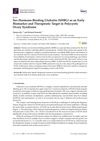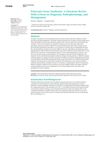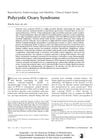Polycystic Ovary Syndrome: Challenges and Treatment Options
August 2019
in “
Repozitorij Farmaceutsko-biokemijskog fakulteta (Sveučilišta u Zagrebu)
”
polycystic ovary syndrome PCOS hyperandrogenism anovulation polycystic ovarian morphology insulin resistance hypothalamus-pituitary-ovary axis combined oral contraceptives antiandrogens medroxyprogesterone acetate levonorgestrel-releasing intrauterine systems metformin clomiphene citrate birth control pills IUD Provera Mirena Glucophage Clomid
TLDR PCOS treatment combines lifestyle changes and medication to manage symptoms and improve quality of life.
This theoretical thesis described the pathophysiological characteristics and treatment options for polycystic ovary syndrome (PCOS), the most common endocrine and metabolic disorder in women of reproductive age. PCOS was considered a multigenetic disorder with significant environmental influences, involving disruptions in the hypothalamus-pituitary-ovary axis, insulin resistance, obesity, and adrenal dysfunction. Key reproductive features included biochemical and clinical hyperandrogenism, (oligo)anovulation, and polycystic ovarian morphology. Women with PCOS had increased risks of glucose intolerance, type 2 diabetes, dyslipidemia, hypertension, and cardiovascular diseases, leading to reduced health-related quality of life and higher prevalence of depression, anxiety, psychosexual dysfunction, and eating disorders. Optimal treatment aimed to combine non-pharmacological measures, such as a hypocaloric diet and physical activity, with pharmacological treatments. Combined oral contraceptives were the first-line treatment for hyperandrogenism in non-pregnancy planning patients, with antiandrogens as a second line. Medroxyprogesterone acetate, levonorgestrel-releasing intrauterine systems, and combined oral contraceptives effectively regulated menstrual cycles, protecting against endometrial hyperplasia and cancer. Metformin was commonly used for metabolic irregularities, while clomiphene citrate was the first line for inducing ovulation in anovulatory PCOS patients.





